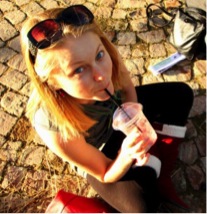Have a quick skim of the last blog post: this one follows on, as Part 2 of our synopsis of Professor Johan Vlaeyen’s plenary lecture at the World Congress on Pain…
Having explained non-associative learning and Pavlovian conditioning, Prof Vlaeyen moved on to operant conditioning, a behavioural model of learning which Skinner proposed and Fordyce developed to formulate his well-known and complex analysis of pain behaviour. The idea behind operant conditioning is that the likelihood that a behaviour will occur depends on the consequences of that behaviour. If the consequences are desirable, the behaviour is positively reinforced, and is more likely to recur. Certain antecedent stimuli may also play a role by providing information about the likelihood that the desired reinforcement will occur. For example, begging your mother for sweets when your father is not in the room might yield sweets in your hand, whereas the same request to your mother while your father is present could earn you a stern word of discipline. Your father is a discriminative antecedent stimulus: he influences the likelihood that the reinforcement will be desirable, and thus he influences the likelihood of the behaviour occurring before it has even occurred.
There is evidence that operant conditioning can be produced through indirect learning. We don’t actually have to experience the relationship between the stimuli ourselves; we can learn the relationship by rules. Again, this brings up the role of the healthcare practitioner. What rules do we teach our patients, implicitly or explicitly? And if those rules are helpful at first, do we remember to teach a safety rule over them once, for example, the tissues have healed and the movement is safe? Prof Vlaeyen mentioned a study that suggests that patients’ beliefs about physical activity are associated with the views held by their rheumatologists. This is a relationship worth reflecting on.
Of course, these models of learning do not exist in isolation. We are complex beings, and our learning is intricate and constantly being updated. There is room for a combined Pavlovian-operant model, and non-associative learning must also be taken into account. But each of these models provides a starting point for investigating how we learn, and how our learning influences pain and the array of experiences associated with it. Prof Vlaeyen is a world-renowned voice in the area of behavioural medicine, and the perspectives he shared in this plenary lecture were insightful and relevant, both to clinical practice and to research.
Tory Madden
 Tory arrived from South Africa to start her PhD at BiM. She is a physiotherapist who worked clinically before turning her focus toward research. She is interested in pretty much anything related to pain and neuroscience, thanks to some particularly inspirational teaching by Romy Parker during her undergraduate training at the University of Cape Town.
Tory arrived from South Africa to start her PhD at BiM. She is a physiotherapist who worked clinically before turning her focus toward research. She is interested in pretty much anything related to pain and neuroscience, thanks to some particularly inspirational teaching by Romy Parker during her undergraduate training at the University of Cape Town.
Tory’s research looks at classical conditioning and pain. She is also an associate editor for BiM. She tries to spend much of her spare time exercising to compensate for the vast quantity of chocolate that lives in her bottom desk drawer. Luckily, she loves trail running as much as she does food.



